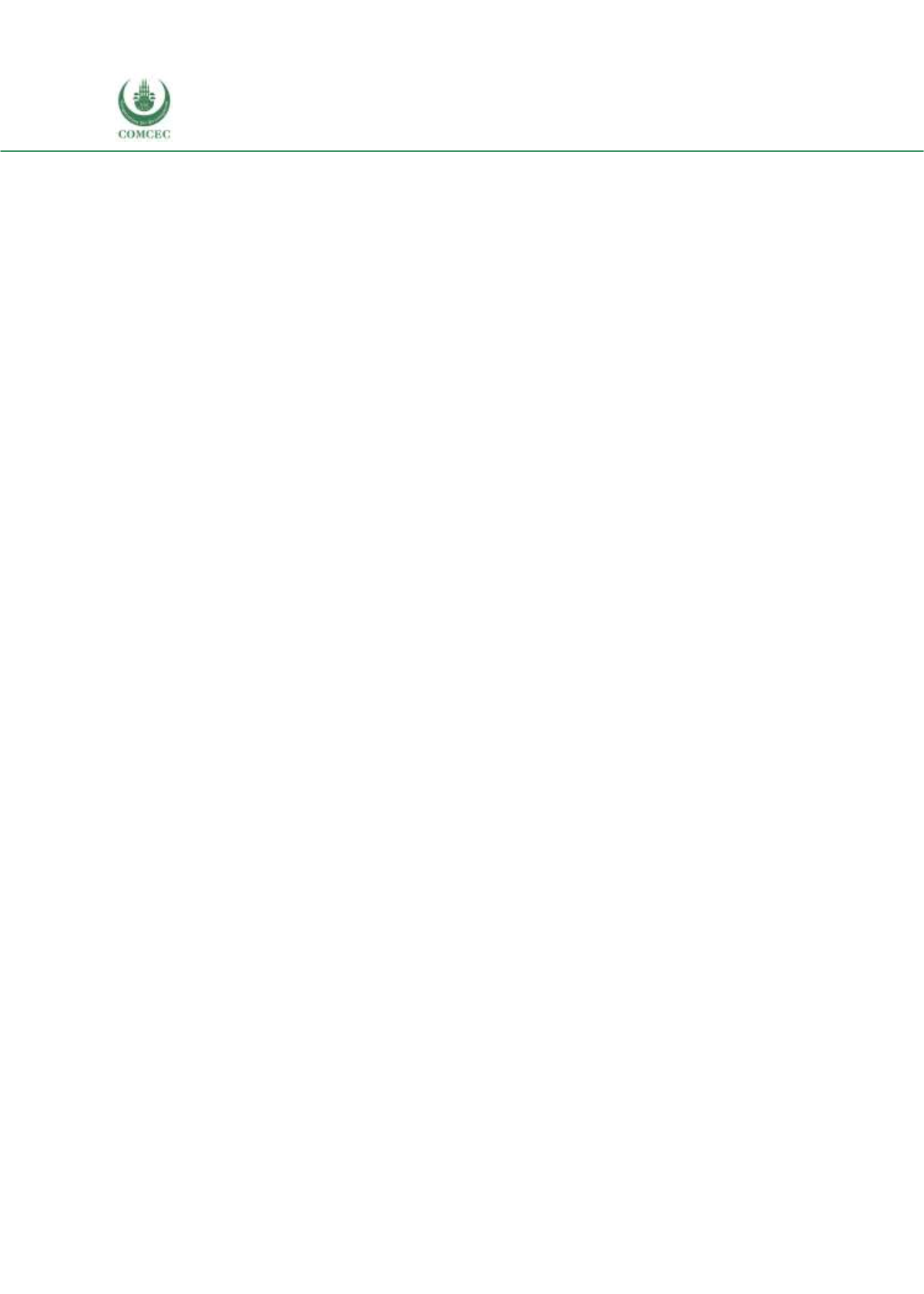

Reviewing Agricultural Trade Policies
To Promote Intra-OIC Agricultural Trade
162
to revise the agricultural trade policies. Specifically, trade policies promoting intra-OIC trade
could contribute to the welfare of the Chad population, decreasing the costs of imports to the
country while increasing the chance of agricultural producers in reaching the export markets.
For the other African case study, the Gambia, the share of agricultural population is lower than
that of Chad. In Gambia, a lower percentage of population depend on agricultural sector for
livelihoods, yet the share of agricultural products in total exports is high, however with
fluctuating percentage shares across the years. The Gambia faces high tariff rates for their top
five export products in agriculture from their top five OIC importers. Reduction of tariffs in the
OIC markets would enable the Gambia to increase its exports, thus contributing to the welfare
of the country.
The share of agricultural exports is relatively lower in Turkey andMoroccowhen comparedwith
the other two OIC case countries. Both in Turkey and in Morocco, the agricultural sector’s share
is relatively smaller than the African case study countries. In Turkey, tariffs in agriculture are
typically larger than tariffs in non-agricultural sectors. The usual case of tariffs in agriculture
being larger than tariffs in non-agricultural sectors is also observed for Morocco.
Smaller shares of agriculture in GDP in Turkey, Morocco and the Gambia are indications that
there is a room for growth in services (such as tourism in the Gambia) and industry (such as
agri-food industry in Morocco and Turkey). Promotion of agricultural production and intra-OIC
trade of agricultural products for use as inputs in the value chains of the services and industry
can be a policy alternative in Morocco and Turkey in order to create high value added products.
Agri-food industry and tourism offer a wide range of possibilities for the use of agricultural
inputs and these agricultural inputs (rawmaterials) can be supplied from the OICmarkets. More
emphasis should be given to integrate agricultural products into the value chains of agri-food
industry and tourism, thereby creating new potential to use a variety of agricultural inputs from
the OIC countries, providing possibilities to create innovative and high value added products.
The high value products can have inputs supplied from a wide variety of OIC markets
representing a diverse set of alternative possibilities.
With regards to the cases of non-OIC countries (Thailand and Brazil), it is observed that the
share of agriculture in GDP is generally lower than the OIC sample cases, with the exception of
Turkey. The share of agricultural employment is lowest in Brazil while the share of agricultural
exports is high. In Thailand, the export share of agriculture is lower than the OIC cases, again
with the exception of Turkey and Chad. A world leader in the production of sugar, coffee, and
orange juice, Brazil is the largest agricultural exporter in South America, and among the largest
agricultural exporters in the world. Thailand is a large exporter with a surplus both in its overall
trade and in agriculture.
Top agricultural export and import products in the OIC market
The case study countries differ with regards to their top export and import products in the OIC
agricultural markets. In Section 3.4 of this report, five potential product divisions for promoting
intra-OIC trade were selected. These products are live animals, meat, sugar, feeding stuff for
animals and oil seeds. It is possible to observe these products among the top export items of the
case study countries. For example, feeding stuff for animals and sugar for Morocco; feeding stuff
for animals for the Gambia; oil seeds, feeding stuff for animals and live animals for Chad; sugar
for Thailand; and sugar, meat and feeding stuff for animals for Brazil are among the top export
items for the OIC market. Turkey is the only case study that does not include any of the selected
potential product divisions among her top export products in the OIC market.


















